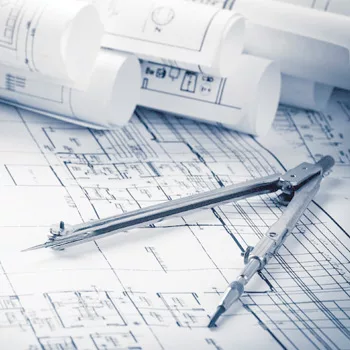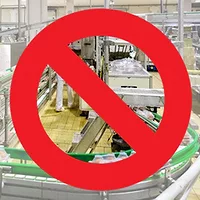A Tale of Unexpected Growth and Development

What do you do when you find yourself in charge of your plant’s sanitation program? How did you get here? Who in their right mind would want to be accountable for such an enormous responsibility? When I started out in this industry as a quality supervisor, I asked these questions. I was working for a major food company and within my first year was promoted to third-shift sanitation as the liaison between the quality assurance (QA) and sanitation departments. I wanted to cry! Being in my mid-20s, it felt like a death sentence to my social life. No more weekend parties, no more visiting with friends after work. I had just relocated from the big city to a smaller town 600 miles away, so an active social life was important. Now, my life would need to be lived in reverse—sleeping during the day and awake during the night. Ugh, the dreaded third shift!
Luckily for me, I had a quality manager who was a wise old sage and was used to working with and developing young talent. I asked my boss if I had to take the promotion. He just laughed and said, “Yes, you do and one day you will thank me.” If you have ever unexpectedly found yourself in the role of sanitation, you may be thinking as I did when I sarcastically asked him, “Why is that?” His response totally caught me off guard. I was thinking of the promotion as a banishment to third shift, but instead, he explained how very few people in the food industry have true sanitation knowledge and experience. Having this tool in my “tool belt,” should I choose to learn sanitation, would provide me greater opportunity for the future of my career. So, in essence, he was helping me grow professionally. At the time, his words were little comfort. I, in my naiveté, figured I would always have opportunity. After all, I did graduate from a Big 10 university with a degree in food science; shouldn’t that be enough? With the fate of my social life at hand, I went somewhat begrudgingly to third shift to be schooled in the fine art of food plant sanitation.
Life at the Beginning
Most QA supervisors at my company were required to do a short stint on third shift. I guess I was no different from the rest who counted down the days, hours and minutes until they were back on first shift. Being the only quality supervisor on third shift, not only did I have sanitation responsibilities, but I still had QA responsibilities for all 19 production lines, within five departments, in a plant that was 1 million square feet under one roof. Thank goodness for my naiveté. I never realized just how much responsibility I had to manage, so I simply embraced it.
I met the sanitation manager—let’s call him Mr. Jay—who had seen his fair share of QA supervisors come and go to do their short stint on third shift. He too thought I was like all the rest. Mr. Jay had been doing sanitation at this plant for years and years—well over a decade, maybe two at that point. He lived and breathed it. He was also the number three person in the plant behind the plant manager and quality manager. If the two of them were out of the plant, Mr. Jay was in charge. He was in no mood for another wet-behind-the-ears QA person thinking they knew something about sanitation because they had read something in a book during a class called Food Plant Sanitation.
It was my first night on third shift. After counting down hours 1 and 2 of my short stint by checking on product quality, I finally approached Mr. Jay and asked him what he needed me to do. His response, if I remember correctly, was: stay out of the way, don’t get hurt and try to learn something. I looked at him befuddled, so he said, “Do you see this pipe? It’s the CIP [clean in place] line for this product system. I want you to trace this line through the plant and back.”
At last, a task! Call me an overachiever, but I was fixated on that pipe like my brother’s pit bull on a bone. The CIP circuit was huge. That pipe ran from one end of the plant to the other. It went through walls, around corners and up through the ceiling. It never dawned on me that Mr. Jay was buying himself a few hours of quiet by sending me on what he thought was a wild goose chase. I was very determined: If Mr. Jay said to trace that pipe, I was going to trace that pipe to the ends of the earth.
When I finished with my quest some hours later, I felt as though I had walked to the ends of the earth or at least all 1 million square feet of the plant. Because the CIP circuit was difficult to trace and to remember all of its twists and turns, I drew it out on a few sheets of paper to show where the pipe went on its journey through the plant. I gave these papers to Mr. Jay. He looked at them, he looked at me, he looked at them and then asked if I had drawn this. I nodded yes. Without knowing, I had drawn my first circuit diagram. Mr. Jay was thrilled! I fell in love with sanitation at that moment. For the next couple of months, it became my project to draw diagrams of all the plant’s CIP circuits.
Importance of Sanitation's Input
I was fortunate that, early in my time with Mr. Jay, the plant received a multimillion-dollar construction project to install a new production department. While all the engineers and upper-level operations and maintenance managers were in meetings, discussing installation plans, Mr. Jay and my boss, the QA manager, were not included, as if only operations, maintenance and engineers would be responsible for the new line. Mr. Jay and my boss both requested meeting input to represent QA and sanitation aspects of the project. I was told it was much easier and more prudent to iron out wrinkles in the design phase of a project than to try to fix design flaws once equipment was bolted to the floor. How many times have you gone into plants and observed sanitary design issues because the design was created in a bubble without the input of sanitation?
By now, Mr. Jay and I were joined at the hip; I was called his shadow. Even so, I was still surprised when he and my boss included me in those early design planning meetings. I think I was the only person of a supervisory level in the room. It was good exposure, and I was eager to learn all I could about the design process. Mr. Jay went over every engineering schematic. Changes were made to things like the position and height of equipment.
His concern was about the people who had to clean the line. He said if they can’t access equipment, they can’t clean it, and if they can’t clean it, microbial niches will form that could contaminate product. If product became contaminated, you could have a recall; if people got sick or died, production would stop; and if you stop producing product, you won’t have a job. This, he said, is real job security. You have to catch issues on the drawing board—on the blueprints during the design phase where it is easier and cheaper to make changes to prevent building a sanitation issue into the process.
Most engineers, especially during that time, were primarily concerned with the operational functionality of equipment from a production viewpoint—that is, did the pumps pump, did valves open and close, did the diverter valves divert, could the platforms carry the weight load of ingredients and people? They did not necessarily think about it from a sanitation viewpoint—that is, are the pump stands at least the height of a push broom (4–6 inches) above the floor, so people can clean the floor beneath or the underside of the pump and stand? They did not necessarily think about should we use butterfly valves, which are less sanitary, or a plug valve, which is easier to clean, or a diaphragm pump versus a product displacement (PD) pump for the same reason. They did not necessarily think about the platform being made of open-grate material or solid diamond plate from a sanitation perspective on which is easier to clean and forms fewer microbial niches. No, this was Mr. Jay’s world, and he thought about all that and much more. I had the good fortune to be a witness and participant to it all.
Good Sanitation Specifications
He made sure that equipment was at least 18 inches away from the wall, so that people could get behind it to clean and inspect. He made sure that platforms were elevated high enough so operators could clean beneath more comfortably instead of having to contort their bodies in a cramped space. Before one pipe was welded, Mr. Jay requested samples from the welders to ensure they knew how to make a 3-A sanitary weld. If the welds weren’t smooth enough to reduce the risk of microbial niche formation, Mr. Jay rejected that welder. Tack welds were not allowed, because too often, they have a rough finish that can harbor bacteria and are more prone to corrosion. He made sure that all stainless steel pipes and vessels were 316 polished stainless steel—no 304 accepted—to reduce the risk of pitting, which also can create microbial niche areas.
All stainless steel was passivated to remove “free iron” to prevent tanks and pipes from oxidizing, pitting or forming pinhole leaks down the road. Pipes had to be sloped at the correct rise over run to ensure proper drainage, so product residue and water would not stagnate on the bottom of pipes and become a source of product cross-contamination or bacterial growth. If pipes penetrated walls or ceilings, the point of penetration had to be sleeved with a sanitary material like stainless steel sheeting and sealed to the opening. The opening needed to have enough clearance (at least a 2-inch minimum) between the pipe and sleeve for adequate cleaning and inspection.
Floors, like pipes, needed to be sloped to the drain in the same way and for the same reasons—to prevent water accumulation or puddling—at a drainage rate of approximately 3/16 inch/foot. Floors also had to be made of cleanable and durable materials to accommodate fork truck traffic, cleaners and sanitizers. Nothing was better to Mr. Jay than good old-fashioned paver brick about 2 inches thick and chemically resistant. Walls needed to be of wash-down, microbial-resistant material. Back then, glazed tile was excellent but expensive, so ceramic tile, which was also very good, was the first choice. Today, there are a number of wall materials to choose from, such as plastic and stainless steel. All wall-floor junctures had to be coved and sealed to allow water to drain away from the wall and avoid accumulating in the 90-degree wall-floor seam, thereby creating another microbial niche area.
Conveyors had to be made of cleanable material that wouldn’t embed product residue and create a situation of cross-contamination from one product to another. Conveyors had to be at a height and slope that would allow operators to clean beneath them and allow for proper drainage. Today, we have conveyors with release mechanisms to decrease belt tension around the nose roller for easier belt removal and access to the framework for more effective cleaning. Conveyor and equipment supports for tanks and vessels had to either have ball feet or be situated on angled pads that were sealed to the floor. Simple flat plates would allow for microbial harborage in the space between the plate and floor that would be difficult for the sanitation crew to access and properly clean.
It wasn’t just the equipment, walls and floors that were reviewed. Air, water, drains and electrical systems were also on the radar. Makeup air units on the roof had to be screened, have a prefilter, a HEPA filter and enough pressure to create positive airflow to prevent microbial flora, airborne contaminates or flying insects (should one enter the plant) from easily entering the room. Negative air pressure would simply suck these unwanted contaminants right into the production area. Automatic roll-up doors were installed to prevent doors from being left open by operators bringing ingredients in and out of the room via hand pallet jacks or fork trucks, and reduce exposure time to plant air outside of the processing rooms. As an extra measure, air curtains were also installed as a barrier.
Water systems had to have back-flow preventers or vacuum breakers in-line to eliminate the risk of back siphonage in the event of a negative-pressure situation. Any discharge pipe from a piece of equipment could not be submerged into a drain for this same reason. All discharge pipes had to be at least one and a half times the diameter of the pipe above the drain to create an air break and prevent back siphonage of drain contents into the equipment.
Drains are notorious breeding grounds for all types of bacteria, including pathogens, so having drains that are easy to clean and cleaned regularly would help reduce risk of microbial cross-contamination. Although used in some plants, trench drains, if not installed correctly, can become a sanitation nightmare due to their cleaning difficulty. Consequently, only round drains were used in production areas. Drains had P-traps so water would reside and prevent aerosols and sewer gases from “belching up” into the plant and carrying microorganisms. Drains had to be made of smooth, easy-to-clean material, containing a drain basket to catch smaller debris and a drain lid to prevent large debris from entering the drain system. Production room drain lines had to be on a totally separate drain system from those used for bathrooms and nonproduction purposes.
We all know that electricity and water do not mix. However, manufacturing product involves electricity, and sanitation involves water. To prevent a catastrophe, electrical control panels and junction boxes had to be National Electrical Manufacturers Association 4 rated to prevent water entry for incidental water contact. In addition, operators conducting sanitation were trained on how to clean and protect water-sensitive electrical equipment from becoming saturated with water and cleaning chemicals. No one wanted the headache and cost associated with an electrical equipment failure after cleaning during line start up.
Even something as simple as lighting was evaluated to make sure the room had the proper foot-candles of light, not just for running production but also for sanitation and cleaning verification during inspection. Mr. Jay would say, if they can’t see it (product residue), how do you expect them to clean it? So proper lighting was important. Processing room requirements were between 55 and 65 foot-candles of light; packaging room requirements were between 70 and 80 foot-candles; and sanitation requirements were between 80 and 100 foot-candles. This explains why he would inspect the plant every 6 months with a light meter. When bulbs were going dim, he would have the area relamped and not wait for bulbs to burn out. He was that organized.
CIP Systems and Circuits
But nothing was more important in this project to review than his and my old favorite—the CIP system and circuit diagrams. A three-tank CIP system was to be installed—a tank for rinse water, cleaner and sanitizer, respectively. Pumps used in the CIP circuit could not be PD pumps used for product (they don’t deliver the same velocity or turbulence needed for effective cleaning) but rather centrifugal pumps with sufficient horsepower to move the water with speed and turbulence. The success of effective cleaning with CIP systems depends on time, temperature, chemical concentration, velocity and turbulent flow versus laminar flow.
The volume of water needed to fill the largest circuit had to be calculated to determine the size of CIP tanks to eliminate pump cavitation. Because of the lengths of some circuits, and knowing that every elbow and pipe size reduction impeded flow, portable booster centrifugal pumps would be added to the circuits where necessary to ensure the minimal required velocity of 5 feet/second.
Air-actuated valves had to be ferruled in-line for cleaning removability and have a sight glass with pop-up button to ensure they were pulsing correctly during CIP operation. Associated jumper pipes for the CIP mode had to be labeled for the correct circuit and designed as swing pipes from production mode to CIP mode. If the swing couldn’t be made due to the line configuration, jumper pipes were stored in a designated area with easy access to the operators who would use them. Spray balls for tanks and vessels on the circuit had to be evaluated to make sure the interior surfaces had a full-coverage spray pattern and enough force to completely remove product residue.
Mr. Jay was amazing to watch. He was in his element and worked so well with the project engineers in terms of explaining why design changes needed to be made. His focus was on people and system integration to ensure product protection. He may not have won every challenge, but he certainly won those that were most important. He had long-range vision and could see how putting the hard work in on the front end of the sanitary design phase would pay off on the back end with the continued success of his sanitation program and operators who conducted cleaning.
Lessons in Sanitation
I had a front-row seat to this unique experience. Mr. Jay took me under his wing. What should have been a short month or two stint on third shift lasted 2.5 years. During that time, I picked the brain of a man who was truly a sanitation genius and learned everything I possibly could. He gave me a book that I still reference to this day. It’s called Engineering for Food Safety and Sanitation — A Guide to the Sanitary Design of Food Plants and Food Plant Equipment.[1] Although the pictures may be a bit outdated, the principles and foundation of the book are still relevant. It is my bible for sanitary design. I always say I got my B.Sc. in food science from that Big 10 university, but I earned my “M.Sc. in sanitation” from working under the mentorship of Mr. Jay.
That project was back in 1990: To this day, I have never met another sanitation manager like him. He had absolute control over the plant’s sanitation process, was very strategic and organized in his approach. He knew every piece of equipment, the capabilities and knowledge of his cleaning crew, various cleaning techniques, chemical handling, cleaning verification and pest control. Mr. Jay conducted trend analysis of microbial swab results for clean equipment, nonproduct contact surfaces and drains. He understood cleaning verification data and used them to make sanitation process improvements. He also knew sanitary design; it is the keystone upon which an effective sanitation program is built.
It has been almost 30 years since that project. The plant and Mr. Jay are both gone now. So, as a consultant, I try to do my part in sharing what I’ve learned from him and subsequent experiences with the young, bright sanitation and QA professionals coming up in this industry. This is my passion.
A few years ago, I had the good fortune of seeing my former QA boss, the wise old sage who had since retired from the food industry. I thanked him for sending me to third shift. He was right about sanitation—understanding it, embracing it, living it and breathing it did give me the tools I needed for a successful career.
Ronda Dunson is the CEO of Food Systems Consulting Group.
Reference
1. Imholte, TJ. 1984. Engineering for Food Safety and Sanitation — A Guide to the Sanitary Design of Food Plants and Food Plant Equipment (New York: Thompson & Co.).
Looking for quick answers on food safety topics?
Try Ask FSM, our new smart AI search tool.
Ask FSM →








